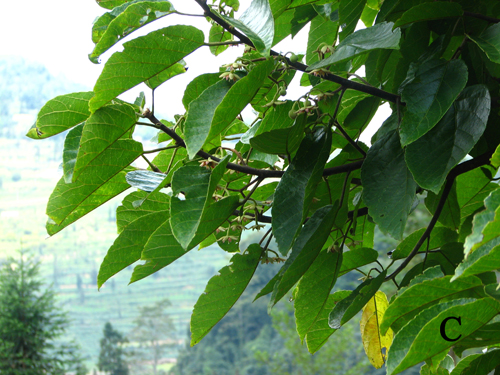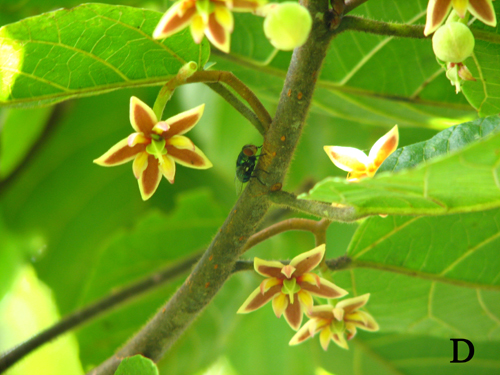Craigia yunnanensis (Tiliaceae) is an endangered deciduous tree species which has high scientific and economic value. C. yunnanensis is seriously threatened and has been pushed to the verge of extinction due to vegetation destruction in China and consequent contraction of its distribution. Hence, it was listed as a nationally rare and endangered plant in 1999 and has also been proposed as a second-ranked plant for national protection in China and included in IUCN red list. As a scientifically important and valued tree species with endangered status, the wild populations of C. yunnanensis therefore represent is a genetic resource that must be conserved.
In 2005, the research group led by Professor ZHANG Changqin began to conduct a systematic study on the conservation biology of C. yunnanensis. After field survey of wild resources, aspects of population ecology, pollination and breeding system, seed biology and conservation genetics were mainly studied supported by the Platform Project of National Science Ministry and the Program of New Key Products in Yunnan Province.
Only six wild populations of C. yunnanensis were found in two disjunct regions of Yunnan, i.e. Wenshan (SE Yunnan) and Dehong (SW Yunnan), from 2005 to 2007.The result of surveying Population structure showed that there are two regeneration types which are seedlings and sprouts. Additionally, the cash crop cultivation and logging seriously threaten the survival of the species. Lack of pollinators and low pollination efficiency may account for the low fruit set (56.67±3.85%), especially seed set (6.26±0.75%). Variations in seed traits, seed germination, and seedling growth characters among six populations were evaluated. All seed and seedling traits exhibited significant differences among populations (P < 0.05). The fitness of seed as assessed by seed size, seed germination and seedling trait was independent of population size, except for the number of seeds per capsule (r = 0.93, P < 0.01). Genetic variation within and among six populations was assessed using AFLP markers. Genetic diversity was higher at species level (PPL = 69.19%, HE = 0.221) than at population level (PPL = 26.22%, HE = 0.095, Is =0.140), and populations in Wenshan region were strongly differentiated from those in Dehong region. Basic information of endangered factors, conservation and introduction for C. yunnanensis was provided by this research, and so did the technical guidance of long-term protection and sustainable use of its resources. The results of this project have been published in Australian Journal of Botany (58/3) in 2010. http://www.publish.csiro.au/?paper=BT09190

Craigia yunnanensis

Craigia yunnanensis




